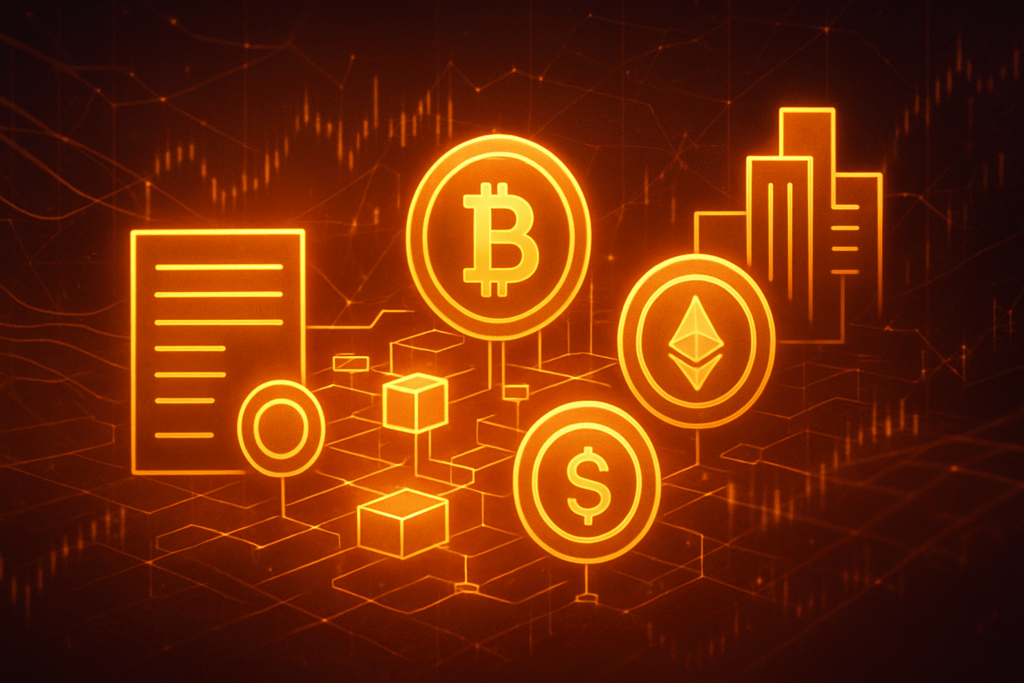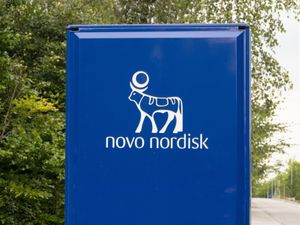
October 15, 2025 – In a landmark development that further blurs the lines between traditional finance (TradFi) and the burgeoning world of decentralized finance (DeFi), KAIO, a leading on-chain infrastructure provider for regulated real-world assets (RWAs), today announced the official launch of a tokenized version of Hamilton Lane’s (Nasdaq: HLNE) Senior Credit Opportunities Fund (SCOPE) on the high-performance Sei Network. This pivotal event, taking place on October 15, 2025, allows institutional and accredited investors unprecedented on-chain access to private credit markets, marking a significant stride in the mainstream adoption of blockchain technology for financial instruments.
The move by Hamilton Lane, a global private markets investment management firm with approximately $986 billion in assets under management and supervision as of mid-2025, through its HL SCOPE Access Fund, is poised to reshape investment accessibility and efficiency. It underscores a growing industry consensus that tokenized RWAs are not merely a trend but a fundamental shift towards a more transparent, liquid, and programmable financial ecosystem. The immediate community response, while still nascent due to the institutional focus of the offering, reflects a generally positive sentiment, with industry leaders hailing it as a crucial step towards the convergence of traditional and digital asset markets.
Market Impact and Price Action
The immediate market reaction to the KAIO/Hamilton Lane tokenization on October 15, 2025, presented a nuanced picture, particularly for the Sei (SEI) token, the native cryptocurrency of the hosting blockchain. SEI's price fluctuated between approximately $0.2156 and $0.23, exhibiting mixed daily performance with some reports indicating a mild decline of 0.3% to 0.67%, while others noted a slight increase of 1.82%. This short-term volatility comes against a backdrop of a broader 20% decline over the past week and 33% over the past month, with SEI trading near $0.2243 on the day of the launch.
A significant factor influencing SEI's price action on this day was a scheduled token unlock event, which saw 55.56 million SEI tokens, representing about 1.15% of the circulating supply and valued at approximately $12.54 million to $12.78 million, entering the market. Token unlocks frequently introduce temporary selling pressure, and analysts had cautioned that this event could cap any immediate recovery for SEI, despite the positive news.
In terms of trading volume and liquidity, Sei's 24-hour trading volume ranged from approximately $156.38 million to $180.5 million. While spot trading volume saw a slight decrease of 13.3% compared to the previous day, derivative market data showed a 1% rise in open interest, suggesting ongoing, albeit cautious, engagement. Overall, Sei was reported to be maintaining liquidity, reflecting underlying confidence in its ecosystem as it positions itself as a key infrastructure for institutional digital assets. No other specific cryptocurrencies were noted to have experienced direct, immediate price movements tied to this particular tokenization event.
The broader market sentiment surrounding Real-World Asset (RWA) tokenization, however, remains overwhelmingly positive. This sector reached an all-time high of $33.8 billion in on-chain value today, October 15, 2025, marking a 115% increase since the beginning of the year, with private credit comprising roughly half of this value. Industry giants like BlackRock (NYSE: BLK) CEO Larry Fink have publicly championed RWA tokenization as the "next wave of opportunity," aiming to bring traditional assets into the digital ecosystem for enhanced efficiency and 24/7 access. Despite this bullish outlook, a JPMorgan (NYSE: JPM) report from August 2025 indicated that RWA tokenization might be underperforming expectations, primarily funded by crypto-native firms rather than broader traditional finance. Furthermore, a September 2025 research study warned of a potential "on-chain subprime crisis" stemming from the "RWA Liquidity Paradox," highlighting risks associated with wrapping illiquid physical assets in highly liquid digital tokens.
Community and Ecosystem Response
The KAIO/Hamilton Lane tokenization on Sei, while a monumental step, has seen an emerging and somewhat nuanced community response, largely due to its focus on institutional and accredited investors. Unlike retail-centric DeFi launches, immediate, widespread social media sentiment on platforms like Crypto Twitter or Reddit is still forming. However, within the circles of crypto influencers and industry thought leaders, the broader narrative around Real-World Asset (RWA) tokenization is overwhelmingly positive and consistently highlighted as a major growth driver for the crypto space in 2024 and 2025.
Crypto experts view such institutional integrations as vital for the maturation and mainstream adoption of blockchain technology. The Sei Network itself is increasingly being recognized as a preferred base layer for stablecoins, RWAs, and enterprise flows, boasting a 260% growth in tokenized real-world assets in the first half of 2025. A significant positive signal today was the news that Laser Digital, a Nomura Group (NYSE: NMR) digital assets arm whose funds are also tokenized via KAIO, received in-principle approval from Dubai's Virtual Assets Regulatory Authority (VARA) to tokenize its flagship Laser Carry Fund. This approval, which allows for secondary market trading on VARA-licensed exchanges, adds significant credibility and potential liquidity to institutional RWA products, bolstering confidence across the sector.
The effects on related DeFi protocols and Web3 applications, while not immediately quantifiable in terms of specific price surges or TVL spikes directly from this single event, are widely anticipated to be profound. Tokenized funds from institutions like Hamilton Lane, facilitated by KAIO, are designed to integrate seamlessly into stablecoin architectures and other DeFi applications. This allows them to serve as secure, transparent collateral or yield-bearing reserves, thereby enhancing the overall liquidity, transparency, and automation within institutional blockchain finance. The Sei Network's specialized architecture, focused on high-performance and user-centric design, positions it as an "institutional settlement layer for all digital assets," which could significantly increase Total Value Locked (TVL) in DeFi protocols that support RWA collateral and spur the development of new DeFi primitives tailored for institutional capital. While the direct impact on NFT projects is less immediate, the broader influx of institutional capital and regulatory clarity brought by RWA tokenization is expected to indirectly benefit the entire Web3 ecosystem, potentially paving the way for future innovations that bridge institutional finance with other Web3 segments.
What's Next for Crypto
The launch of Hamilton Lane’s tokenized fund on Sei via KAIO on October 15, 2025, is more than just a single event; it's a powerful indicator of the short-term and long-term trajectory for the crypto market. In the short term, this institutional embrace of RWAs is expected to fuel increased capital inflows and liquidity into the crypto ecosystem, as traditional investors seek new avenues for diversification and yield. The involvement of established financial giants like Hamilton Lane and BlackRock lends significant credibility to the blockchain space, potentially attracting a broader, more conservative investor base previously deterred by perceived volatility or regulatory ambiguities. This will also intensify the focus on developing robust, compliant, and scalable blockchain infrastructure, with specialized Layer 1s like Sei positioned to capitalize on this demand. We can anticipate the emergence of innovative DeFi products that leverage tokenized RWAs as collateral or yield-bearing assets, although some price volatility in specific crypto assets, particularly those tied to new tokenization efforts, may persist.
Looking further ahead, the long-term implications are transformative. RWA tokenization is building an indispensable bridge between traditional finance (TradFi) and decentralized finance (DeFi), promising a more integrated, efficient, and transparent global financial system. This movement will democratize investment access, allowing fractional ownership of high-value assets and potentially unlocking trillions of dollars in previously illiquid capital. The "next generation of financial markets and securities will be built on the tokenization of assets," a sentiment echoed by industry leaders, necessitating the continuous evolution of high-performance blockchain infrastructure. Future developments could also see the integration of Artificial Intelligence and Machine Learning in tokenized asset management, further enhancing efficiency and decision-making, alongside a critical push for global standardization.
Several catalysts will shape this future. Paramount among them is the establishment of clear and comprehensive regulatory frameworks globally. Regulatory clarity from bodies like the SEC, building on developments such as Japan's FSA classifying digital assets as financial products, will be crucial for fostering trust and enabling full institutional participation. Continued technological advancements in blockchain scalability, interoperability, and security will also be vital, with Sei's sub-second finality and high transaction processing capabilities exemplifying the required infrastructure. The entry of more traditional finance giants and strategic partnerships between TradFi and blockchain firms will accelerate adoption, as will the expansion of tokenized asset classes beyond private credit and U.S. Treasuries to include real estate, commodities, and even intellectual property. The development of robust secondary markets for these tokenized assets and deeper integration into DeFi protocols for lending and yield generation will further solidify their utility. Projects must prioritize compliance, robust infrastructure, strategic partnerships, and transparent value propositions. Investors, in turn, must conduct thorough due diligence, diversify, understand liquidity profiles, and remain informed on the evolving regulatory landscape, adopting a long-term strategic outlook.
Possible scenarios for this evolving landscape include an optimistic one, where regulatory clarity leads to rapid growth and widespread integration, pushing the market to $16-30 trillion by 2030. A conservative scenario anticipates gradual, incremental adoption due to persistent regulatory fragmentation and integration challenges, with the market reaching $2-4 trillion by 2030. Finally, a fragmented ecosystem scenario could emerge, where disparate regulatory frameworks hinder global interoperability, limiting widespread adoption despite regional successes.
Bottom Line
The KAIO launch of Hamilton Lane’s tokenized Senior Credit Opportunities Fund on Sei on October 15, 2025, is a definitive signal of institutional finance's accelerating embrace of blockchain technology for real-world assets. It underscores several key takeaways for crypto investors and enthusiasts: institutional confidence in blockchain is growing, specialized blockchains like Sei are becoming indispensable for meeting institutional demands for speed and compliance, and private credit and fixed income are leading the initial wave of institutional RWA tokenization.
The long-term significance of this trend cannot be overstated. It represents a paradigm shift that will likely revolutionize global finance by bringing trillions of dollars of real-world value onto the blockchain, fostering a more transparent, efficient, and inclusive global financial system. This movement will democratize wealth creation by enabling broader participation in lucrative asset classes through fractional ownership, potentially reducing wealth inequality. Furthermore, the demand for institutional-grade solutions will spur continuous innovation in blockchain technology, regulatory technology, and interoperability. Ultimately, the distinction between traditional and decentralized finance will continue to diminish as more assets and financial operations migrate on-chain.
Key metrics to monitor moving forward include the total on-chain value of tokenized RWAs, the pace of regulatory clarity in major jurisdictions, the entry of new institutional players, and the development of robust secondary markets for these digital assets. While challenges, particularly in regulatory harmonization, persist, the overwhelming benefits of efficiency, liquidity, and accessibility suggest that tokenized RWAs, exemplified by this Hamilton Lane initiative, will become a cornerstone of the future global economy.
This article is for informational purposes only and does not constitute financial or investment advice. Cryptocurrency investments carry significant risk.








